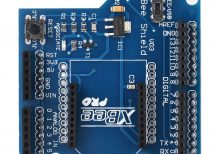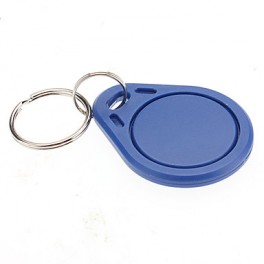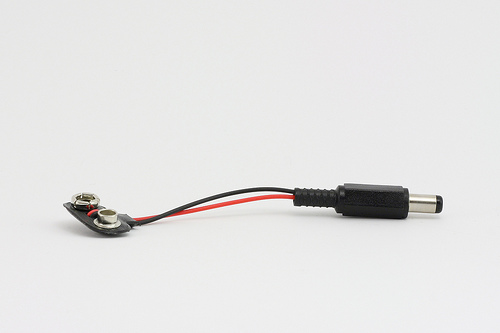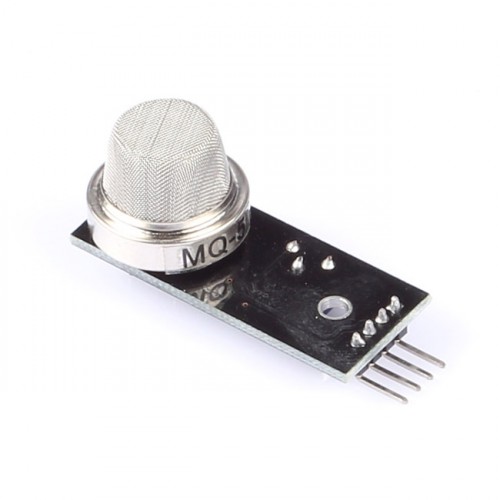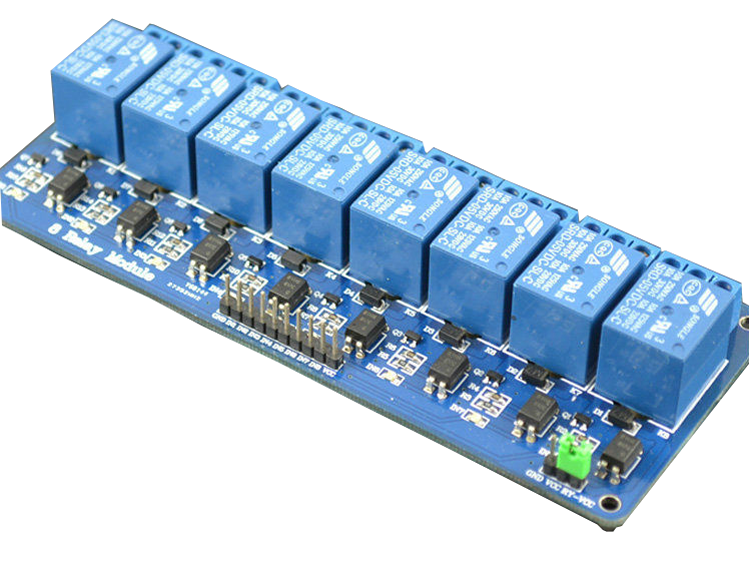|
Description |
The Arduino XBee Expansion Board V3.0 is designed to facilitate easy integration of XBee modules with Arduino boards, providing a convenient platform for wireless communication projects. It allows XBee modules (such as XBee 802.15.4, Zigbee, or others) to be easily plugged into Arduino boards, enabling wireless communication capabilities without the need for extensive wiring.
Key Features:
- Compatibility: Compatible with Arduino Uno, Mega, and other compatible boards.
- XBee Socket: Provides a socket for XBee modules, supporting various XBee module types.
- Onboard Components: Includes necessary components for XBee module operation.
- Power Options: Supports both 3.3V and 5V operation, selectable via jumpers.
- Reset Button: Onboard reset button for resetting connected Arduino and XBee modules.
- Interface: Provides UART interface for communication between Arduino and XBee modules.
- Indicator LEDs: LEDs for power and status indication.
- Expansion Headers: Additional headers for connecting to Arduino I/O pins.
Applications:
- Wireless sensor networks
- Remote monitoring and control systems
- IoT (Internet of Things) projects
- Home automation systems
- Robotics and automation projects
Technical Specifications:
- Dimensions: Standard Arduino shield dimensions
- Power Supply: 5V DC input via Arduino board or external power source
- Communication: UART interface between Arduino and XBee module
- Operating Temperature: Typically -40°C to +85°C
Datasheet: For detailed technical information, refer to the Arduino XBee Expansion Board V3.0 datasheet.
|
The 125KHZ RFID Key Chain is a compact and durable radio-frequency identification (RFID) device used for access control and identification applications. It operates at a frequency of 125kHz and is compatible with standard RFID readers. The key chain format makes it convenient to carry and use for various applications such as security systems, attendance tracking, and asset management.
Key Features:
- Operates at 125kHz frequency
- Durable and compact key chain design
- Compatible with standard RFID readers
- Unique identification number (UID) for each key chain
- Waterproof and shock-resistant
- Long read range (up to 10 cm depending on the reader)
- No battery required (passive RFID technology)
Technical Specifications:
- Operating Frequency: 125kHz
- Material: ABS plastic
- Dimensions: Approximately 40mm x 32mm x 4mm
- Weight: Approximately 6g
- Read Range: Up to 10 cm (depending on the reader and environment)
- Data Storage: 64-bit read-only unique identifier (UID)
- Operating Temperature Range: -25°C to +85°C
- Color: Typically blue, but may vary by manufacturer
- Waterproof: Yes
Applications:
- Access control systems
- Time and attendance tracking
- Membership management
- Asset tracking
- Secure entry systems
- Contactless payment systems
Usage:
- Integration:
- Enroll the RFID key chain in the desired RFID system by registering its unique identifier (UID) with the system’s database.
- Operation:
- Present the key chain to an RFID reader within the read range (up to 10 cm).
- The reader will capture the UID and communicate it to the control system for processing.
- Security:
- Use the key chain for secure access to restricted areas or for tracking attendance.
- Pair the key chain with a compatible RFID reader and control system for seamless operation.
Caution:
- Avoid exposing the key chain to extreme temperatures or harsh chemicals.
- Do not bend or apply excessive force to the key chain to prevent damage.
- Keep the key chain away from strong magnetic fields to ensure proper operation.
Datasheet:
For detailed technical specifications, refer to the manufacturer’s datasheet for your specific 125kHz RFID key chain model.
|
The Arduino 9V Battery Connector is a convenient accessory for powering Arduino boards and other compatible devices. It allows you to connect a standard 9V battery to the Arduino’s power jack, providing a portable power solution for your projects. This connector is essential for mobile and battery-operated applications, offering an easy and reliable way to supply power to your electronics.
Key Features:
- Compatible with standard 9V batteries
- Easy to connect and use
- Provides a secure and stable power connection
- Compact and portable design
- Durable construction for long-lasting use
- Standard DC barrel plug compatible with Arduino boards
Technical Specifications:
- Connector Type: DC barrel plug (center-positive)
- Barrel Plug Dimensions: Outer diameter 5.5mm, inner diameter 2.1mm
- Battery Connector Type: Snap-on connector for 9V battery
- Cable Length: Approximately 15 cm
- Material: Plastic and metal connectors with insulated wire
- Color: Typically black with red and black wires
Applications:
- Portable Arduino projects
- Battery-operated electronics
- Prototyping and testing
- Educational kits
- DIY electronics
Usage:
- Connection:
- Snap the 9V battery connector onto the terminals of a standard 9V battery.
- Insert the DC barrel plug into the power jack of your Arduino board or compatible device.
- Powering:
- Ensure the polarity of the connections is correct (center-positive) to avoid damage to the board.
- The Arduino will draw power from the 9V battery through the connector.
- Monitoring:
- Monitor the battery voltage periodically to ensure it remains within the acceptable range for your Arduino board (typically 7-12V).
Caution:
- Ensure the connector is securely attached to the battery terminals to prevent intermittent connections.
- Avoid short-circuiting the battery terminals.
- Do not expose the connector to moisture or extreme temperatures.
- Remove the battery from the connector when not in use to prevent battery drain.
Datasheet:
Refer to the manufacturer’s guidelines or specifications for further details.
|
The MQ5 Methane and Natural Gas Sensor Module is a gas sensor designed for detecting methane, natural gas, and LPG concentrations in the air. It is widely used in gas leakage detection equipment, home safety devices, and various industrial applications. The module provides a quick and accurate response to gas presence, making it ideal for safety and environmental monitoring.
Key Features:
- High Sensitivity: Detects methane, natural gas, and LPG with high accuracy.
- Fast Response Time: Quickly responds to changes in gas concentration.
- Long Life: Durable sensor with a long operational life.
- Analog Output: Provides an analog voltage output proportional to the gas concentration.
- Digital Output: Includes a digital output for threshold-based gas detection.
- Easy Integration: Simple to integrate into various electronic circuits and systems.
Technical Specifications:
- Gas Detection: Methane, Natural Gas, LPG
- Detection Range: 200 ppm to 10000 ppm (parts per million)
- Operating Voltage: 5V DC
- Power Consumption: ≤ 800 mW
- Preheat Time: ≤ 20 seconds
- Analog Output: 0-5V
- Digital Output: High/Low signal
- Operating Temperature Range: -20°C to +50°C
- Humidity Range: 95% RH
- Dimensions: 32mm x 22mm x 27mm (L x W x H)
Applications:
- Gas Leakage Detectors: Used in home and industrial gas leakage detection systems.
- Environmental Monitoring: Monitors air quality and gas concentrations in various environments.
- Safety Systems: Integrated into safety systems for gas detection and alarm triggers.
- Industrial Equipment: Used in industrial applications for gas concentration monitoring.
- DIY Projects: Suitable for hobbyist and educational electronics projects.
Usage:
- Connection: Connect the module to a 5V power supply and interface the analog or digital output to a microcontroller or monitoring system.
- Calibration: Allow the sensor to preheat for the specified time to ensure accurate readings.
- Monitoring: Continuously monitor the analog output for gas concentration levels or use the digital output for threshold-based detection.
- Integration: Integrate the sensor module into your final application, ensuring proper placement for gas detection.
Caution:
- Preheating: Ensure the sensor is preheated before use for accurate detection.
- Voltage Supply: Use the specified voltage to avoid damaging the sensor.
- Environmental Conditions: Operate the sensor within the recommended temperature and humidity ranges.
Datasheet:
For detailed technical specifications, refer to the MQ5 Methane, Natural Gas Sensor Module Datasheet.
|
The 8 Channel Relay Module is a versatile and reliable module designed to control multiple high-power devices using a microcontroller or development board. Each relay can switch devices up to 10A at 250V AC or 30V DC, making it suitable for home automation, industrial control, and other applications requiring multiple relay operations. The module provides isolation and protection, ensuring safe and efficient control of electrical loads.
Key Features:
- Channels: 8 relays for controlling multiple devices
- Relay Capacity: Each relay can handle up to 10A at 250V AC or 30V DC
- Control Voltage: Compatible with 5V control signals
- Optocoupler Isolation: Provides isolation between the control signal and the relay, enhancing safety
- LED Indicators: Each relay has an LED indicator for visual status confirmation
- Common, Normally Open (NO), Normally Closed (NC) Contacts: Flexible wiring options for various applications
Technical Specifications:
- Number of Relays: 8
- Relay Type: SPDT (Single Pole Double Throw)
- Control Voltage: 5V DC
- Relay Voltage: 250V AC, 30V DC
- Relay Current: 10A
- Isolation: Optocoupler isolation
- Dimensions: 138mm x 56mm x 19mm
Applications:
- Home Automation: Control lights, fans, and other appliances remotely.
- Industrial Automation: Manage industrial equipment and machinery.
- DIY Projects: Ideal for hobbyists and makers requiring multiple relay controls.
- Security Systems: Control locks, alarms, and other security devices.
- Robotics: Operate various actuators and motors in robotics projects.
Usage:
- Wiring: Connect the relay module to your microcontroller or development board, ensuring correct connections for VCC, GND, and control pins.
- Power Supply: Provide a 5V power supply to the module.
- Control Signals: Use the control pins to activate or deactivate the relays.
- Connecting Loads: Connect the devices to be controlled to the relay terminals (COM, NO, NC) as per your requirement.
- Programming: Write code to control the relays based on your application’s logic.
Caution:
- High Voltage Handling: Be cautious when working with high voltages. Ensure proper insulation and safety measures.
- Proper Wiring: Verify all connections before powering the module to avoid short circuits or damage.
Datasheet:
For detailed technical specifications, refer to the 8 Channel Relay Module Datasheet.
|
